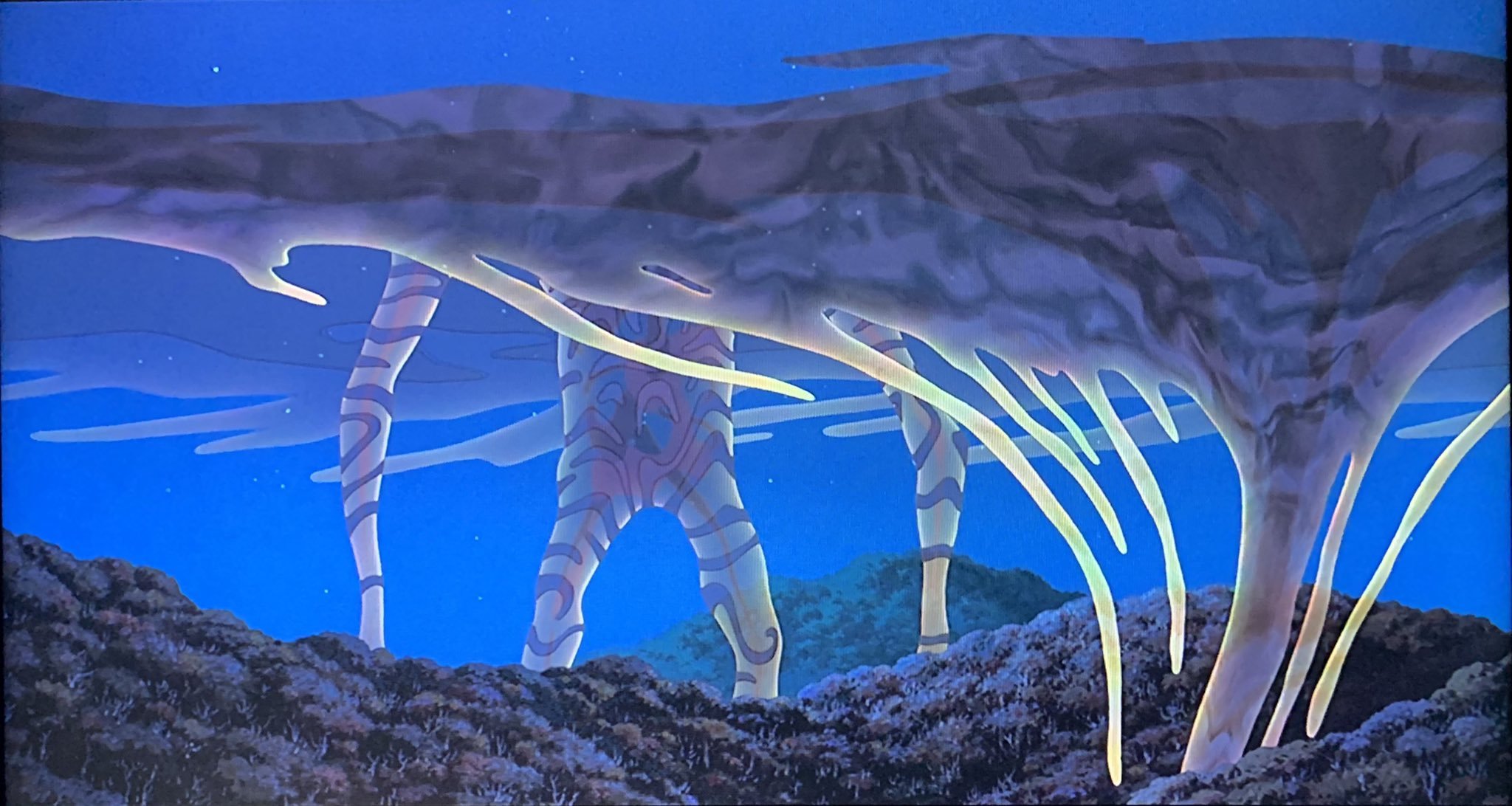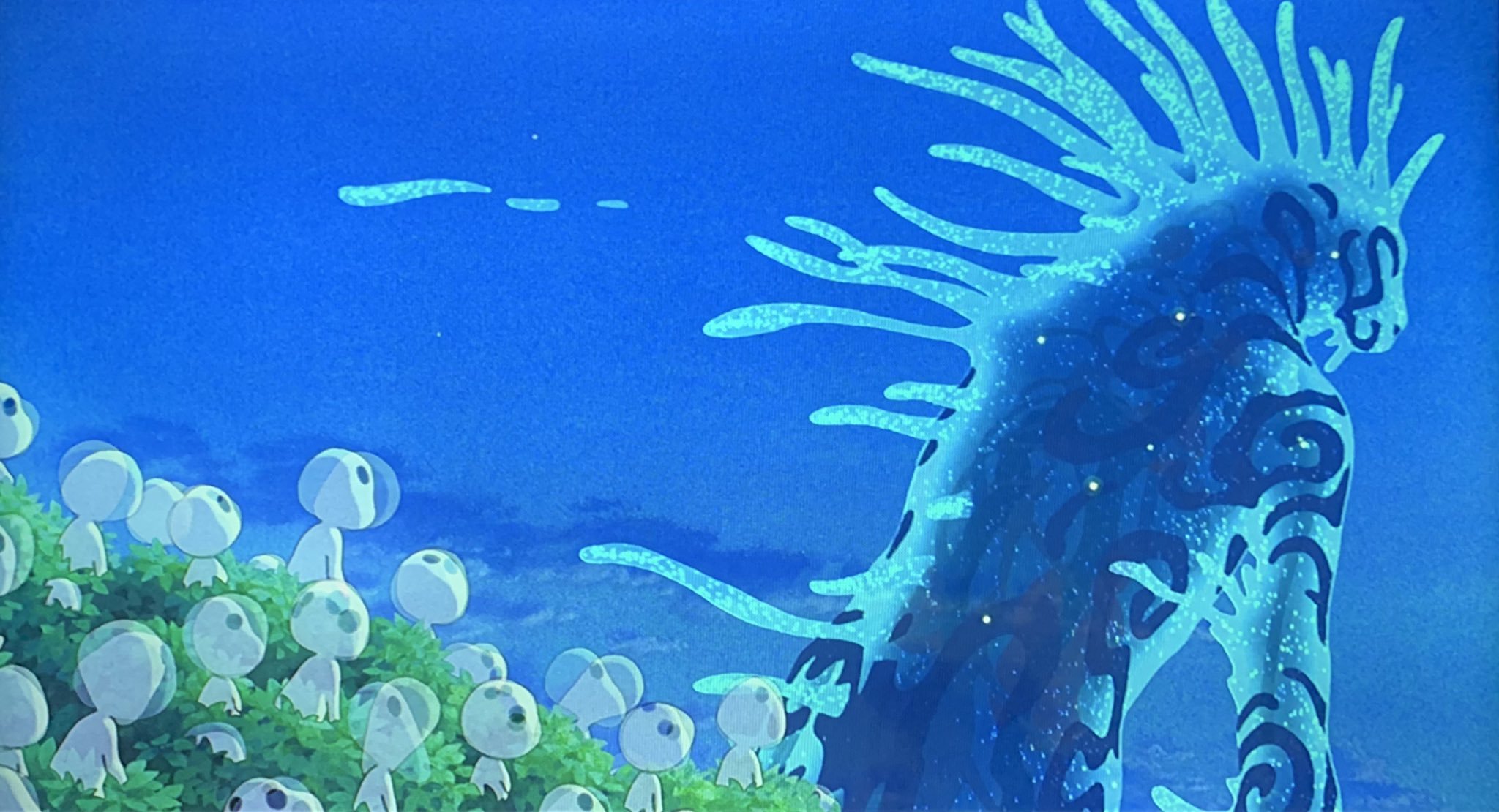Princess Mononoke (1997)
The forest, with its ambient green light, high cathedral of canopy, echoing silences and heavy vibes is the original church. Here the life-drive is turned up to eleven, death folding back into life, entanglement, mutual-aid and mystery. It is no wonder that the forests of children’s stories are so full of magic. Having spent any time in an old growth forest, on the coast of the Oregon say, or in the red pine forests of northern Minnesota, the language of religion becomes handy to describe such experience: it feels, for lack of a better word, spiritual; ecology, like any other religion, is inspired by the mystical. Princess Mononoke—25 years old this year, a mashup of Last of the Mohicans and Japanese forest mythology—is a fair depiction of what would otherwise be known as forest power. Forest power is the planet’s ability to create and sustain the most (terrestrial) biodiversity in one place and likewise its ability to generate raw human meaning. What is the meaning? That death belongs to life, that time is not linear, that consciousness is shared (and fundamentally weird); it is the oldest and first religion. But humans that have been infected with “progress”—the newer and more viral religion—have killed the forest gods and released the nightwalker: this is a metabolic rift in the life cycle; death on the planet scale. Environmental collapse began long before we knew that any such thing could happen; it is too late to stop it now. We have criminalized (and forgotten) the gods of the forest for a very long time, little knowing that we could not survive without them.


